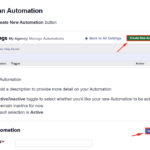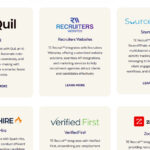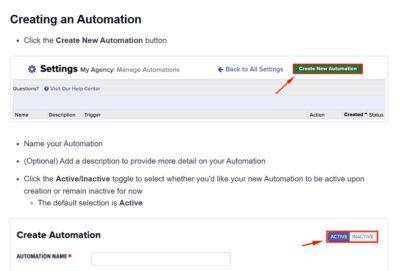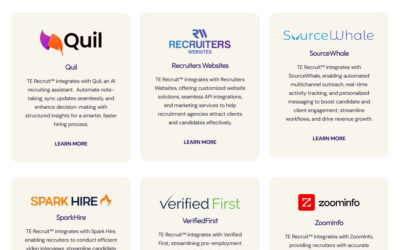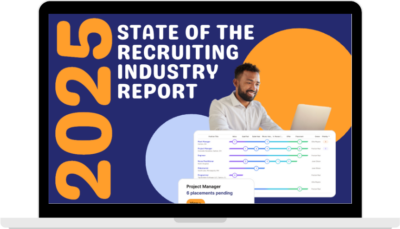(Editor’s note: The information from this article by Top Echelon Recruiting Software has been taken from an Expert Recruiter Coaching Series webinar by Mike Lejeune of Lighting the Path titled, “Composed, Clear, and in Control: The New Standard for Recruiting Leaders” Click HERE to watch the video of that training webinar for free.)
In a world where volatility, uncertainty, complexity, and ambiguity (VUCA) have become the new normal, the demand for a new kind of leadership in the recruiting industry is emerging. In a powerful webinar session titled “The New Standard for Recruiting Leaders,” veteran executive and leadership mentor Mike Lejeune laid out a compelling vision for what the future of recruiting leadership must look like: composed, clear, and in control.

Mike Lejeune’s message wasn’t born in a boardroom or a textbook. It was forged in the real-world challenges of building, scaling, and selling his own staffing firm, and in the past decade, coaching leaders across industries from North America to South Africa. His central thesis is clear: In times of chaos and uncertainty, leaders must become anchors. Their greatest tools are not just metrics or motivational speeches, but emotional intelligence, trust-building, and the discipline to pause before they act.
This article distills the key insights from Lejeune’s session into three core capacities every recruiting leader must now develop: Clarity in Chaos, Control Under Pressure, and Connection That Sustains Trust.
1. Clarity in Chaos: Why the Power of the Pause Is the First Line of Leadership
Lejeune begins by naming the emotional elephant in the room: uncertainty. From client ghosting to economic turbulence, today’s recruiters are operating in an environment that is anything but stable. And with uncertainty comes emotion—fear, anxiety, doubt.
These emotions aren’t unique to junior team members. Leaders experience them, too. The challenge, Lejeune says, is not to eliminate these emotions, but to manage them. That starts with one discipline: The Power of the Pause.
“Pressure doesn’t build character,” Lejeune states. “It reveals it.”
The “pause” is a brief but powerful tactic—a three-second mental timeout to prevent reactive behavior. Rather than springing into problem-solving mode, leaders should pause, assess, anchor, and then respond. This four-step process allows leaders to bring logic and data into emotionally charged situations, avoid missteps, and model clarity for their teams.
-
Pause: Mentally step back to collect your thoughts.
-
Assess: Ask, “What matters most right now?”
-
Anchor: Clarify your role in the moment—are you a coach, closer, or leader?
-
Respond with Precision, Not Pressure: Choose deliberate, thoughtful action over impulsive fixes.
In chaotic environments, clarity becomes a stabilizing force. But it only emerges when leaders have the self-control to pause and think clearly.
2. Control Under Pressure: Leading the Emotional Weather
Lejeune likens leaders to thermostats: they don’t just read the room—they set the temperature.
Amid tight timelines, client demands, and the relentless grind of recruiting, many leaders default to what Lejeune calls the “storm cloud” approach—charging in with high drama, pressure, and demands. While that may yield short-term action, it often burns out teams and erodes trust.
Instead, the new standard requires leaders who can manage the weather—their own emotions and the team’s climate. This is not about removing pressure; it’s about helping people process it. Leaders must become emotionally intelligent guides who help their teams reset, refocus, and move forward, even when results are delayed or disappointing.
Lejeune poses an important self-check: “What pressure shows up most in your leadership?” Is it a lack of job orders? Ghosting clients? Unrealistic expectations?
The answer becomes your opportunity—not to react, but to respond intentionally and model composure.
“Composure builds trust,” said Lejeune. “And trust is the currency that converts effort into performance.”
3. Connection That Sustains Trust: Emotional Intelligence in Action
Perhaps the most powerful insight Lejeune offers is this: connection is the foundation of leadership.
Recruiting is, at its core, a people business. And people need to feel heard, respected, and valued. In a high-pressure environment, leaders often default to command-and-control tactics. But Lejeune challenges leaders to develop vulnerability-based trust—the willingness to be open, honest, and human.
This concept is grounded in Patrick Lencioni’s Five Behaviors of a Cohesive Team, a model that Lejeune uses extensively:
-
Trust is the foundation.
-
Productive conflict allows for healthy disagreement.
-
Commitment follows from clarity and buy-in.
-
Accountability becomes possible through mutual trust.
-
Results flow when everyone is aligned and committed.
Leaders foster this culture not by avoiding discomfort, but by embracing it skillfully. They provide psychological safety, where people can speak openly, make mistakes, and grow without fear.
EQ Reset: Moving from Reaction to Intention
When emotions run high, Lejeune recommends an EQ “reset”—a three-step process to help both leader and team regain focus.
-
Name the Emotion: Is it fear, frustration, anxiety?
-
Reframe the Story: What facts do we actually know? What assumptions are we making?
-
Respond with Intention: What outcome are we aiming for and how can we respond to achieve it?
This emotional discipline prevents leaders from projecting past baggage or jumping to conclusions. It also models behavior for their teams to follow.
Lejeune also introduces a simple yet powerful communication technique: Acknowledge – Ask – Advise.
-
Acknowledge the emotion and situation: “You seem really frustrated the client hasn’t responded.”
-
Ask clarifying questions: “What do you think is behind their silence?”
-
Advise with precision, not criticism: “Let’s talk through some follow-up strategies together.”
The result is a team that feels seen, supported, and empowered.
Culture Shift: From Fixer to Facilitator
One of the most memorable moments in Lejeune’s talk is when he shares a story about being told bluntly by a team member, “Sometimes, I just need you to listen.”
It was a pivotal moment. Lejeune realized that jumping into “fixer” mode was often more about his discomfort than his team’s needs.
The new standard for recruiting leaders isn’t about solving every problem. It’s about co-creating solutions, cultivating independence, and guiding people to grow. That means asking more questions, listening deeply, and stepping back when needed.
“The most important words your people will hear are the words that come out of their own mouths and go back into their ears,” said Lejeune.
By creating space for others to think, leaders build ownership, trust, and long-term resilience.
Practical Takeaways for Recruiting Leaders
To adopt the new standard, leaders can start with the action steps listed below.
-
Develop the Power of the Pause. Practice delaying your initial reaction by three seconds in stressful moments.
-
Identify Your Leadership Role. Are you needed as a teacher, coach, closer, or leader right now?
-
Model Composure. Your tone sets the temperature. Strive for calm, clarity, and confidence.
-
Engage in Productive Conflict. Encourage open dialogue and opposing viewpoints to drive clarity and buy-in.
-
Build Psychological Safety. Let your team know it’s okay to speak, fail, and learn.
-
Ask More, Tell Less. Use the Acknowledge–Ask–Advise method to coach rather than command.
-
Watch for Triggers. Be aware of past experiences that may skew your perception or behavior.
-
Commit to Emotional Intelligence. Recognize that your ability to respond intentionally—not react impulsively—is your leadership superpower.
The Path Forward: Resilience and Opportunity
Mike Lejeune’s session wasn’t just a lecture; it was a call to action. As uncertainty continues to loom large, the leaders who thrive will be those who are calm in the storm, clear in the chaos, and deeply connected to their people.
It’s not about charisma, control, or credentials. It’s about composure, clarity, and connection—the true pillars of modern leadership.
For those who heed the call, the rewards are profound. Not only will you navigate uncertainty with confidence, but you’ll also build teams that trust you, follow you, and grow with you.
Welcome to the new standard. Are you ready to lead it?



